#hsulibrary
Explore tagged Tumblr posts
Photo

This #spooktober 👻 get some costume inspiration from the #SpecialCollections of #hsulibrary ! Morris Herman was a Humboldt local poet with a number of publications. His works include such spooky titles as "Salem's Girl" and "The Magician". Visit Special Collections for access to the M. Herman poetry collection 🕸🕷🕸 #krb (at Humboldt State University Library)
1 note
·
View note
Photo

Good morning everyone. Look at all these books in our HSU library so pretty. I feel motivated today. Have a nice day!!! . . Finally turned in my long essay last night which I've been working on for the past few days pulling all nighters. Finally got some rest but now I have to study for my other classes 😥 two more weeks until I get to go home. . . . . . . . . . . . #bookstagram #booknerd #books #hsu #hsulibrary #humboldtstate #goodmorning #inspiration #motivation
0 notes
Video
instagram
#LoveTrumpsHate #notmypresident #HSULibrary #Humboldt (at Humboldt State University)
0 notes
Photo

Come check out cool vintage postcards like this one from the Hartsook Inn in the Humboldt Room’s Tim McKay Postcard Collection! Search the database online at http://library.humboldt.edu/humco/ and take a look in person by visiting the HSU Library! -EK
#specialcollections#hsulibrary#TimMcKayPostcardCollection#archives#library#california#humboldt county
1 note
·
View note
Photo
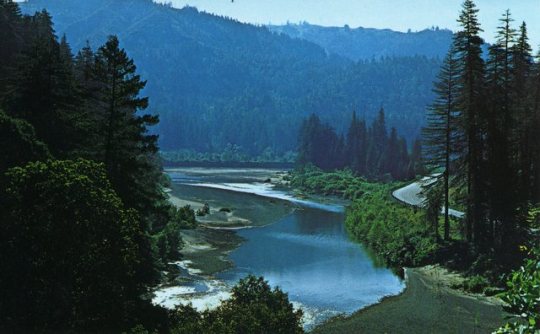

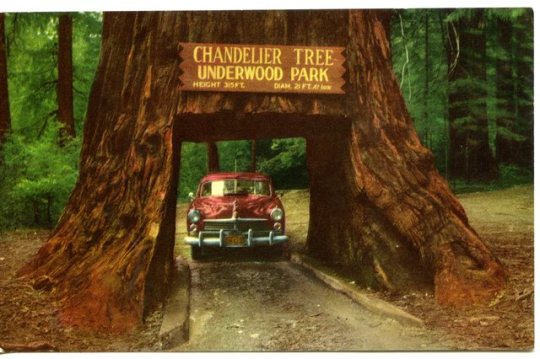


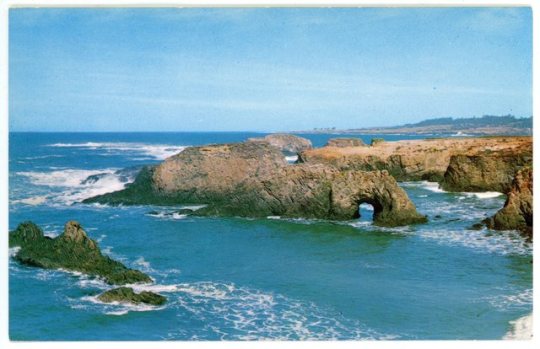
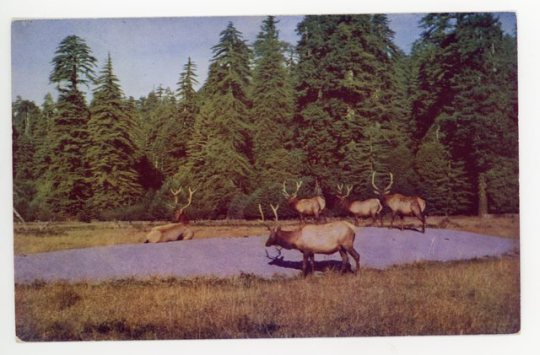

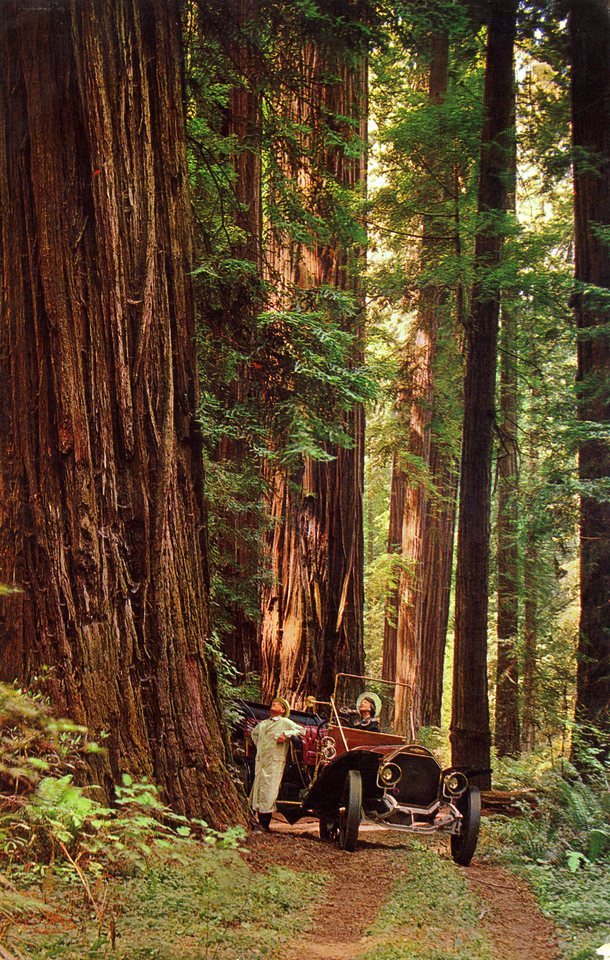
Tim McKay (1947-2006)
The Tim McKay postcard collection
The gorgeous scenery of Humboldt County attracts many interesting characters from far and wide. Tim McKay was one of these. Born in Stockton, CA in 1947, McKay was always raised close to the beautiful outdoors of California spending his earliest years exposed to rural farm life. He maintained a fascination for photography in high school and went on to be the director of the Northcoast Environmental Center, located in Arcata, California, for thirty years, 1976 to 2006. His position at the Center demonstrates his true passion for the natural world and conservation. Received by the Library shortly after his passing, Mr. McKay’s postcard collection illustrates this passion with beautiful imagery of Northwestern California scenery and wildlife. Interns and volunteers the the Humboldt State University Library are currently working on the digitization of this collection but for now please enjoy the above selection of some of McKay’s fascination.
For more information about this gorgeous collection visit the Humboldt State University library website, or go to http://library.humboldt.edu/humco/holdings/McKayPostcardsAid.html#biographical
#SpecialCollections#HSUlibrary#tumblarians#postcards#archives#Humboldt#humboldtscenery#northwestcoast#northwestcalifornia#westcoast#chandeliertree#vintage#conservation#nature's beauty#TimMcKayPostcardCollection
3 notes
·
View notes
Photo

A gem from the Special Collections archives. Not much information is given about the photograph, but the individuals shown seem to be of relative economic success considering their style of dress and the expendable income they would have needed to afford a bicycle at the time.
0 notes
Photo



Today’s the day!!!
Come visit us from 3-5 this afternoon for the Grand Opening of our new Humboldt Room! There will be free cake ;-)
#Humboldt room#Humboldt state university#hsulibrary#grand opening#celebration#special collections#Hsu library#Humboldt state university library#alex
5 notes
·
View notes
Photo



Today in uncommon news, our student assistants found these two newspaper articles about some rather odd and ambitious crimes. How a street sweeper from Los Angeles could have been successfully transported to Aurora, Colorado, is still unclear to us but it makes for an interesting read nonetheless.
The top article is from The San Mateo Times, Fri 27 Jun 1969
The bottom article is from The San Francisco Chronicle, Wed 1 Mar 1972
To find more funny newspaper articles, search through our Humboldt Room pamphlet collections here.
2 notes
·
View notes
Photo

#NotMyPresident #notCalifornia's President Not #Humboldt's either. #LoveTrumpsHate #always There's a #march today Starting 2 o'clock #HSULibrary #BeThere (at Humboldt State University)
3 notes
·
View notes
Photo






Today we celebrated the opening of the Humboldt Scholars Lab. Pictured are most of the books from our Von Humboldt Collection, the Humboldt State University Library time capsule from 1953, a street atlas of Eureka from 1920, and the books from our last post!
We are so excited to see all the great work that will come out of our new Scholars Lab.
-Zack
1 note
·
View note
Photo


L4HSU Book Repair Workshop Review
So I felt a little ambitious signing up for the four hour book repair workshop. Let me just state now that these workshops aren’t just run by the Librarians at HSU, but professors and staff from all over campus and even community members and students (stay tuned for July, as the interns come up with their own workshops!) The workshop instructor for the Book repair workshop happens to be an advisor for the ITEPP (Indian Tribal Education Personnel Program) where she also runs their curriculum resource center (essentially a smaller library).

Throughout the workshop the 7 of us continued to work having a question now and again. The workshop itself wasn’t so much a lecture but more of a what the name suggests, a workshop. The instructor moved about and adjusted her teaching method and pace pending on who she was instructing one on one with. She’d do a quick demonstration, multiple times to make sure we each had a good grasp on how to do things (which was admittedly difficult at times as we were dissecting and drilling holes into books) I did feel as though the table arrangements would have been more beneficial if they were in a circle however, rather than being set up in rows. Being seated at “the front” of class, I found myself turning around quite often to catch a glimpse at what others were doing. And despite it being four hours, it felt as if we needed more time. The instructor herself had said that when taught herself, she was given six weeks to completely repair/make books.

So it was quite ambitious in itself to try to condense that knowledge into a quick workshop. Though I feel a two day event might have been more efficient. As certain portions of the book needed to be under a book press for what she has suggested was 2-24 hours.
In the end it wasn’t bad at all, in fact quite fun, and I was pretty proud with what I was able to accomplish, but the result in having to rush book repair ended in my book lining ripping along the spine due to wet glue and a slight misplacement of the paper. Overall it was an inspiring experience that everyone seemed to love and appreciate, to the point of wanting to know the next time it was going to happen
-Melitta Jackson, Library Scholar Intern Summer 2016
For more information on L4HSU:
https://library.humboldt.edu/about/L4HSU.html
1 note
·
View note
Photo


Hi everybody, my name is Albert Bernales and I am a summer intern for the Humboldt State University library. As a student here, I am majoring in business and minoring in economics. I do enjoy playing around with technology and that’s what interested me in checking out Camtasia, a screencasting program. I’ve never heard of this program and decided to give it a shot. After this L4HSU event, it has opened up my horizons to creating and is another way to make my projects more unique!
The Camtasia presentation was hosted by Victoria Bruner and Tim Miller. I feel like they created a good atmosphere for learning. It was a very interactive, easy to follow and most importantly, fun! This made others more inclined to learn the program and this did spread to the audience because they seemed very excited to learn and create their own projects. Attendance consisted of older adults, staff and a handful of HSU students. There were not a lot of young people and families, mainly due to the fact that the computers are reserved for staff and students.
Camtasia is a very surprising program. The clean user interface was fluid and easy to use. Also, no matter how intimidated you are by technology, it is very approachable. Lost!? That’s no problem because Victoria and Tim were very helpful and answered any and every question that the audience had.
In the end, I learned a lot more than just a screencasting program called, Camtasia. I learned that the Humboldt State Library has a very strong team-oriented community. The campus is willing to keep an open mind and help each other learn and succeed.
The library is doing a great job engaging the community by exposing new programs that they are not familiar with. This challenges the members and excites us about what the library has to offer.
As for myself, I learned that I enjoy learning as a group because it is more exciting and engaging. Seeing other projects can help spark new ideas and refresh old ones in mind. I also learned that the HSU computers are made for success. Aside from Camtasia, they are loaded with a ton of great software that can make your projects shine from your peers.
This was a great experience overall and do plan to attend more L4HSU events. However, it would’ve been nice to see a completed project that utilized Camtasia before the audience even opened the program. This could give a better understanding of what projects you can make with Camtasia.
In the end, Camtasia was a great program that was presented well and had an attentive audience! The next step is to hop on one of our computers in the library, open up the Camtasia program and get creative! I hope to see some of your projects!
-Albert Bernales, Library Scholar Intern Summer 2016
0 notes
Photo

L4HSU Event Review
Quick quiz, what data display method is the most interesting and easy to understand quickly out of the following?
This excel table: http://www.ers.usda.gov/datafiles/Natural_Amenities_Scale/natamenf_1_.xls
This still image made using the excel data from above: http://www.ers.usda.gov/data-products/natural-amenities-scale.aspx
Or this interactive map of the same data with hover data provided automatically when you move your mouse: https://www.washingtonpost.com/news/wonk/wp/2015/08/17/every-county-in-america-ranked-by-natural-beauty/
The answer seems obvious but you would be surprised how many people and organizations are choosing to release data in bulky and boring tables instead of unlocking the full potential of the data through visual analytics.
This workshop, entitiled “Visual Analytics: Exposing the Past, Understanding the Present, and Looking to the Future”, was the first of a five part series held by Michael Le at the HSU library. Because this was the introductory session of the series, Mr. Le introduced briefly many topics that would be talked about more in depth in future sessions. The overarching theme of the series seemed to be contextualizing data in order to tell a story and keep it interesting for all possible users of the data. As someone who has agonized over many frustratingly dull projects in excel, this really reached me as being key. After discussing this basic principle with us, the instructor went over many examples including data use by Google and by Humboldt State University. He showed us how to keep the audience engaged with the subject matter by avoiding tables and long lists of numbers and instead reaching for new ways to display old material. These new ways included specialty apps and data driven documentaries, the data display methods of the future.
Overall, I would give this workshop a 5/5 for being informative and engaging. The instructor was obviously knowledgeable and skilled with his subject. I would highly recommend his future workshops to all students and professionals looking to take their own performance to the next level and impress on their future projects.
- Christine Emerson, Library Scholar Intern Summer 2016
0 notes
Text
L4HSU Event Review


Presented by Humboldt State librarian Tim Miller on June 9th, the L4 HSU event “White Fragility: Context and the Myth of Objectivity” represented a crucial starting point for students, staff, and community members to address enduring issues of race and discrimination in American society. More specifically, the workshop focused on what scholar Robin DiAngelo coined as “White Fragility,” or the inability of white people to discuss matters regarding race without engaging in a range of defensive behaviors. The problem of white fragility continues to permeate American institutions today, making the forum particularly relevant to understanding the ubiquity of systemic racism, the implications of “whiteness” as an implicit ticket to privilege, and the necessity of effective communication as a tool for awareness.
The event enjoyed an impressive turnout of students, counselors, professors, advisers, recent graduates, and the public. Stating that “I don’t want this to be a lecture, I want this to be a discussion,” Tim presided over a constructive conversation directed by those in attendance. Because of the emotionally-laden nature of the topic, clear guidelines were upheld to ensure respect was given to those choosing to share their experiences with the group. Despite the recurrent claim that contemporary society is “color blind,” speakers revealed the surprising extent to which racism and white fragility remain prevalent in both a university setting and in American society at large.
The popularity of the workshop led to a second group meeting on June 16th and the potential for similar events in the future. For those who are interested, the links below provide greater insight into the topic as well as a sign-up sheet to register for a possible third meeting. In order to move towards a society of greater understanding, empathy, and equality, it is our responsibility as a community to continue dialogues such as these into the future.
-Meghan Ueland, Library Scholar Intern Summer 2016
Link to the Google form for people who are interested in signing up: http://bit.ly/discussingWhiteness
Link to the presentation: http://bit.ly/white-fragility
Link to the Google doc of the presentation: http://bit.ly/wf-handout
Link to the research guide for the discussion (still being developed): http://libguides.humboldt.edu/whiteprivilege/fragility
Link to Robin DiAngelo’s article: http://libjournal.uncg.edu/index.php/ijcp/article/view/249
0 notes
Photo

In the spirit of “Draw the Squad”, perhaps some artists might enjoy drawing their favorite characters as these actors from a 1962 performance of The Boy Friend in Arcata, CA.
For more images of this and other stage performances, click on this link to visit the HSU Library’s Humboldt County photograph collection.
-Zack P
1 note
·
View note
